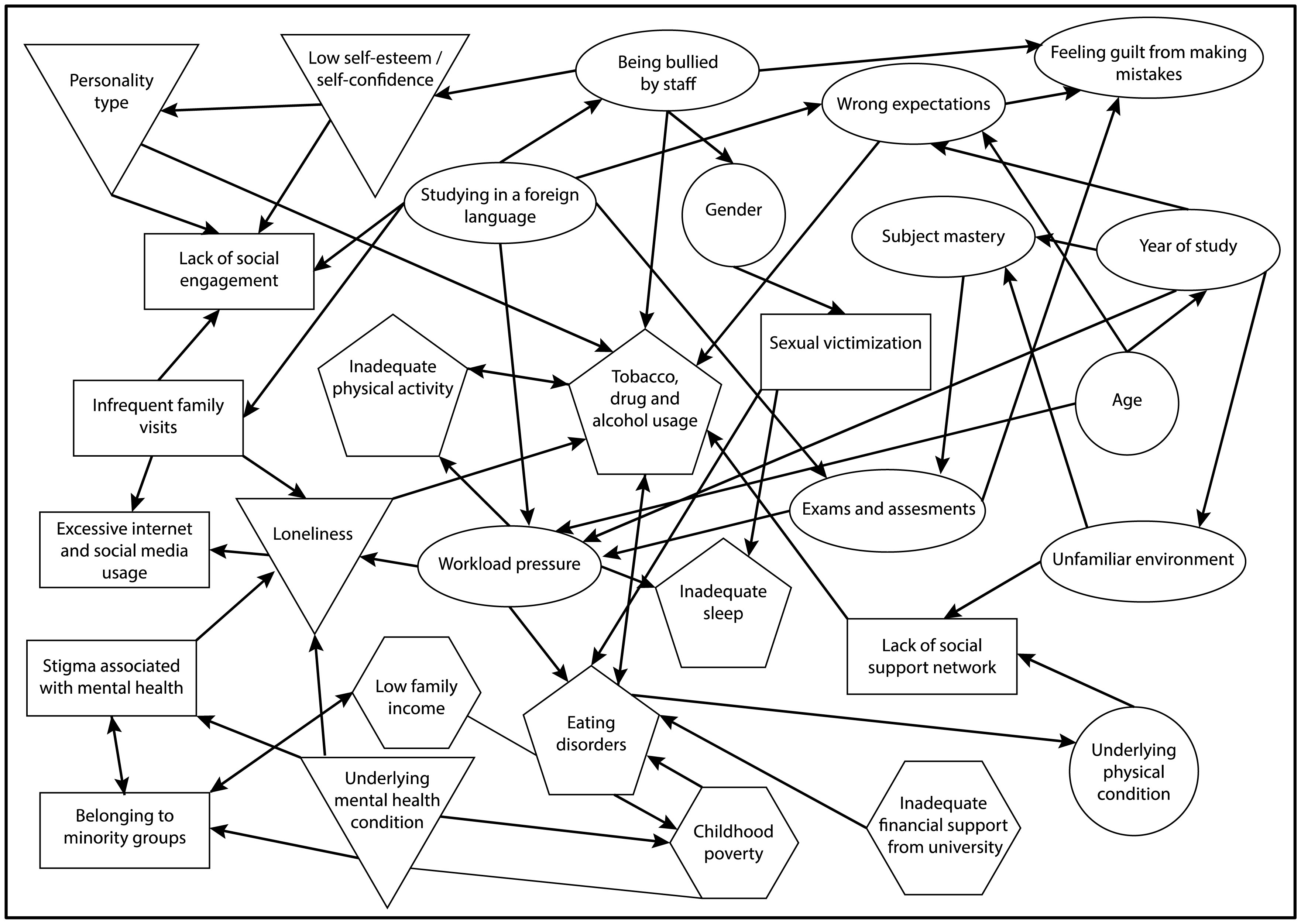Researchers have employed sophisticated network analysis techniques to identify and subgroup risk factors for depressive symptoms among college students. This innovative approach not only sheds new light on the complex interplay of factors contributing to depression but also paves the way for more targeted and effective interventions.
The Rising Tide of Campus Depression
The mental health crisis on college campuses has been a growing concern for educators, health professionals, and policymakers alike. With rates of depression and anxiety among students reaching alarming levels, the need for a more nuanced understanding of the underlying factors has never been more pressing.
Dr. Emily Chen, lead researcher of the study and associate professor of psychology at Stanford University, explains the motivation behind their approach: “We’ve long known that depression isn’t caused by a single factor, but rather by a complex interplay of biological, psychological, and social elements. What we’ve lacked is a way to visualize and analyze these connections in a meaningful way.”
Network Analysis: A New Lens on an Old Problem
Enter network analysis, a powerful tool borrowed from fields as diverse as computer science, sociology, and epidemiology. This methodology allows researchers to map out complex relationships between various factors, revealing patterns and clusters that might not be apparent through traditional statistical methods.
“Think of it as creating a map of depression risk factors,” Dr. Chen elaborates. “Each factor is a point on the map, and the lines connecting them represent how strongly they’re related. This gives us a bird’s eye view of the entire landscape of depression risk in college students.”
The study, published in the Journal of Affective Disorders, involved over 5,000 undergraduate students from 20 universities across the United States. Participants completed comprehensive surveys assessing a wide range of potential risk factors, from sleep patterns and academic stress to social media use and family history of mental illness.

Key Findings: The Clusters of Risk
The network analysis revealed several distinct clusters of risk factors, each representing a different pathway to depressive symptoms:
- Academic Pressure Cluster: This group included factors such as perfectionism, fear of failure, and excessive study hours. Interestingly, this cluster showed strong connections to sleep disturbances and substance use.
- Social Disconnection Cluster: Factors in this group included loneliness, difficulty making friends, and perceived social rejection. This cluster was closely linked to increased social media use and decreased participation in campus activities.
- Financial Stress Cluster: This group encompassed concerns about student loans, part-time job pressures, and family financial difficulties. It showed strong connections to both the academic pressure and social disconnection clusters.
- Identity and Transition Cluster: Factors here included homesickness, cultural adjustment (particularly for international students), and uncertainty about major/career choices. This cluster was most prominent among first-year and transfer students.
- Health Behavior Cluster: This group included poor sleep habits, irregular exercise, and unhealthy eating patterns. It showed significant connections to all other clusters, highlighting the importance of physical health in mental well-being.
Dr. Robert Patel, a psychiatrist specializing in college mental health at Johns Hopkins University, who was not involved in the study, commented on its significance: “This research gives us a much more sophisticated understanding of how different risk factors interact. It’s not just about identifying individual risks anymore, but about understanding how they form interconnected webs of vulnerability.”
Implications for Prevention and Intervention
The identification of these risk clusters has profound implications for how universities approach mental health prevention and intervention strategies.
Dr. Chen suggests that this network approach could lead to more personalized and effective treatments: “Instead of a one-size-fits-all approach to campus mental health, we can now tailor interventions to target specific clusters of risk factors. For instance, a student struggling primarily with the academic pressure cluster might benefit from a different set of interventions than one grappling with social disconnection.”
Some potential targeted interventions suggested by the research include:
- Academic Skills Workshops: Focusing on time management, study techniques, and coping with academic pressure.
- Social Connection Programs: Initiatives to foster meaningful peer relationships and community engagement on campus.
- Financial Literacy Courses: Providing students with tools to manage financial stress and make informed decisions about loans and part-time work.
- Cultural Adaptation Support: Targeted programs to help international students and those from diverse backgrounds navigate the college transition.
- Holistic Wellness Initiatives: Integrated programs addressing sleep hygiene, nutrition, and exercise, recognizing their interconnected role in mental health.
Technological Applications: The Future of Campus Mental Health
The network analysis approach also opens up exciting possibilities for leveraging technology in mental health monitoring and intervention. Dr. Lisa Wong, a computer scientist specializing in health informatics at MIT, envisions potential applications:
We could develop smartphone apps that use this network model to monitor risk factors in real-time. By tracking things like sleep patterns, social interactions, and academic stress levels, we could potentially identify students at risk of depression before they even recognize the symptoms themselves.
Such technology could allow for early intervention, potentially preventing the onset of severe depressive episodes. However, Dr. Wong also cautions about the ethical considerations of such approaches, emphasizing the need for strict privacy protections and student consent.
Challenges and Future Directions
While the study represents a significant advancement in our understanding of depression risk factors among college students, the researchers acknowledge several limitations and areas for future investigation.
Dr. Chen notes, “Our study provides a snapshot of these risk networks, but we know that they’re likely dynamic, changing over time and in response to various life events. The next step is to conduct longitudinal studies to understand how these networks evolve throughout a student’s college career.
Additionally, the researchers emphasize the need for cross-cultural studies to examine how these risk networks might differ across various cultural and socioeconomic contexts.
A Call to Action for Universities
The findings of this study serve as a wake-up call for universities to adopt more sophisticated and nuanced approaches to student mental health. Dr. Patel argues that institutions need to move beyond simply increasing counseling resources:
“While more counselors are certainly needed, this research shows us that effective mental health support requires a campus-wide approach. It’s about creating an environment that addresses these interconnected risk factors at multiple levels – from academic policies to social programs to health services.”
As colleges and universities grapple with the ongoing mental health crisis, this groundbreaking application of network analysis offers a beacon of hope. By mapping the complex web of factors contributing to depression, researchers have provided a new roadmap for understanding and addressing student mental health.
The challenge now lies in translating these insights into actionable strategies that can make a real difference in students’ lives. As Dr. Chen concludes, “We’ve unveiled the intricate tapestry of depression risk. Now it’s time to use this knowledge to weave a stronger safety net for our students.”
With this innovative approach, the future of campus mental health looks brighter, promising more targeted, effective, and compassionate support for students navigating the challenges of college life.
















Add Comment